Offering programs and services are the key ways that many nonprofits advance their causes. If this describes your organization, the related pages on your nonprofit website are especially important to explain the connection to your mission and encourage new participants to get involved in a program and make use of your services.
Are your program pages clear and helpful? Do your services pages provide comprehensive explanations and eligibility? If you’re not so sure your current content is doing the trick, we pulled together the best practices, helpful tips and examples of real nonprofit program pages to get your creative juices flowing for these mission-critical pages on your site.
A Note on Organization
Before we dive into what goes on the page, it’s important to look at where the page will fit into the structure of your website. Our guide, Common Website Structures for Nonprofits, breaks down the ins and outs of organizing all of the pages on your site. For many nonprofits, top-level overview pages with individual pages detailing each program or service do the trick.
However, there are other ways to organize, like breaking up your services into categories within one section of your site. Or maybe you provide one main program and can place it right in the main navigation. Take the time to think about what’s most logical for new visitors to your site looking for this information.
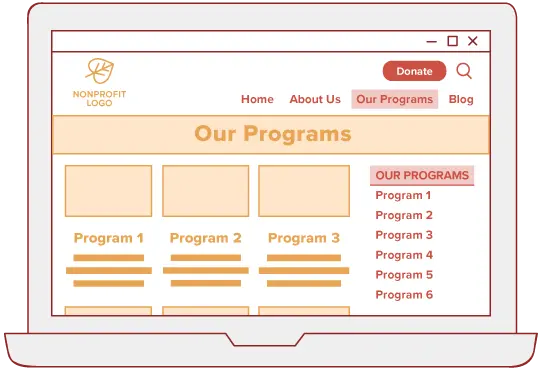
Content Best Practices for Service and Program Pages
Depending on your organization, this page could be called Programs, Services, Issues, How We Help, Our Approach or something similar. Basically, it serves as an umbrella for the sub-pages that describe specific programs and services in greater detail.
Put the User First.
Nonprofits oftentimes go wrong here by thinking about themselves first. The user doesn’t need to know what you do based on staffing or your strategic plan. They simply want to find a topic that interests them, learn more about how you approach it and find a way to participate or help. Put their goals first by asking, “What do our target audiences want to accomplish here?”
Reiterate Your Mission.
For people that land on this page without visiting other parts of your site first, include a restatement of your mission to help people better understand how your programs tie into your overall goals.
Explain the Model or Process.
If your organization follows (or created) a specific model or approach, consider introducing it here and linking to a separate page for more in-depth information. This helps add context to the programs or services you offer.
Organize Programs Logically.
Make it easy for a visitor to find the program or service that meets their needs and interests by grouping like services together. This could mean organizing by age group or demographics of those served, the service area where programs take place, the issues/topics that each address, and so on.
Offer Brief and Clear Explanations.
Don’t expect visitors to recognize programs and services by name. Try to answer who, where, how, and why in a brief description of each item. Link to the related page to dive into greater detail.
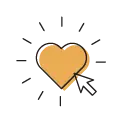
How Aging Ahead Powers Their Brand and Programs with a Wired Impact Website
See how one nonprofit revamped their website’s program content to better serve the community. Read the case study ›
Real Nonprofit Examples
Check out how these nonprofits are making the most of their service and program pages and get inspired to tackle your own.
Latin American Youth Center
On their What We Do page, the Latin American Youth Center summarizes the overall goal of every program they provide, tieing in their mission and organizing programs into logical categories. On this main page, they also introduce their model for youth development and how it influences their programs. Individual programs are detailed within the subpages of each category page.
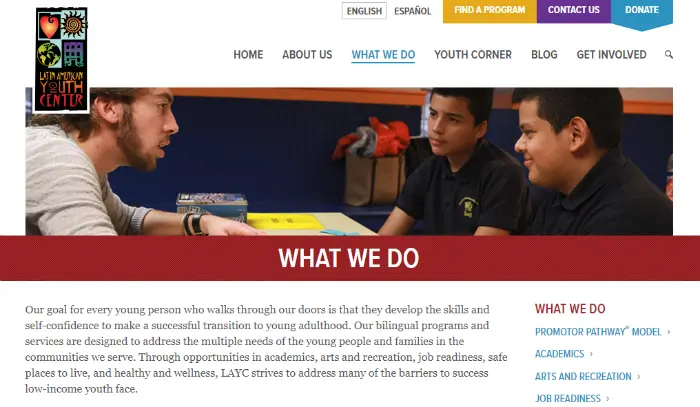
Together We Rise
The How We Help page on the Together We Rise site introduces each of their six programs and services, connecting them to their mission in a brief introduction and inviting visitors to learn more by clicking the buttons linked to individual pages. By adding a fun photo for each program and service, they bring both heart and visual intrigue to the page.
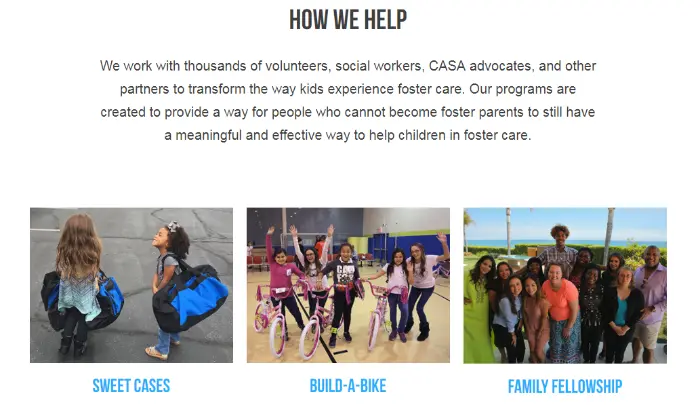
W!se
On their W!se Institute program page, W!se emphasizes the value in a variety of ways. They not only include all of the necessary information to learn about and participate in the program as a volunteer or mentor, but also a powerful video of testimonials from previous students, partners and mentors to inspire future participation.
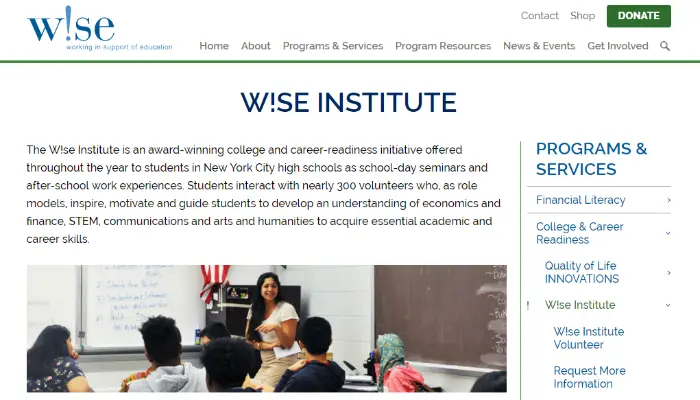
DC Alliance of Youth Advocates
Using the Wired Impact platform for their website, the DC Alliance of Youth Advocates answers all of the necessary questions on their program page Youth Workforce Leaders Academy. They even include a form directly on the page so that visitors can express their interest in the program as they learn about the benefits.
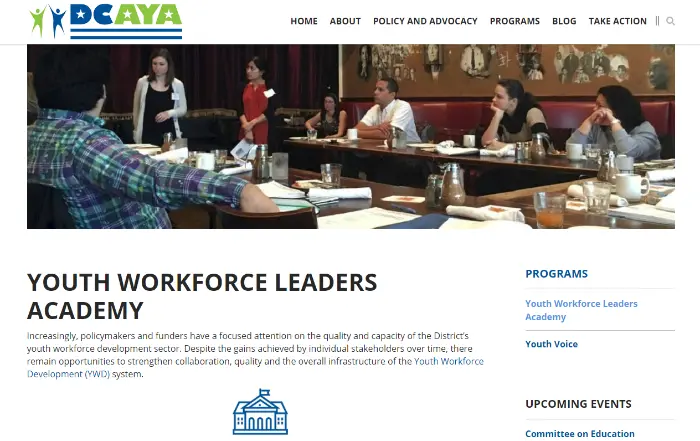
Are your nonprofit service and program pages following best practices? Do you answer all of the necessary questions within the content of individual service and program pages? What questions do you have for us as you pull together content for these pages? We’d love to hear from you in the comments.

Hi Christine, I’m Raúl and i will like to connect with you. I subscribed to Wired Impact Blog recently and saw your name in Best Practices for Nonprofit Service and Program Pages, so I clicked it and here I am, writing you.
I have an NGO/Org/Asociación Civil in Mexico, really interested in learning!
I just sent you an inMail (Linkedin)!
Unfortunately, we don’t have our Website. We founded the non-profit organization (civil association) in September 2017, but we are working to have our presence on Facebook. Making a web page for an organization like ours that our income comes through donations, is a bit difficult at the moment. However, we see Facebook as an economic platform. What do you think?
Please forgive my bad English 🙂
Hi, Raúl. That’s great! We see a lot of young nonprofits start out on Facebook before launching their first website. It’s a great way to build awareness for your cause and attract new supporters. Check out our blog posts on how to give your page a refresh and how to look at your data to adapt to the recent algorithm changes. Best of luck!